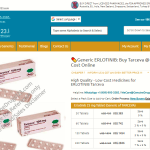The digital age has opened up a world of limitless possibilities, and custom software could be the key to realizing your company's full potential.
So, are you ready to begin developing custom software? Let's get started and learn everything you need to know.
In this blog, we'll take you through every aspect of developing custom software. We'll lead you through the key processes, considerations, and techniques to put you on the right track.
Understanding the complexities of custom software development is critical for efficiently leveraging its potential, whether you're a seasoned entrepreneur or a business newbie.
The digital age has opened up a world of limitless possibilities, and custom software could be the key to realizing your company's full potential.
So, are you ready to begin developing custom software? Let's get started and learn everything you need to know.
In this blog, we'll take you through every aspect of developing custom software. We'll lead you through the key processes, considerations, and techniques to put you on the right track.
Understanding the complexities of custom software development is critical for efficiently leveraging its potential, whether you're a seasoned entrepreneur or a business newbie.
Understanding Custom Software
Before delving into the specifics, what is custom software development and comprehending its significance is essential.
Custom software, also known as bespoke or tailor-made software, is designed and developed to satisfy the unique needs and requirements of a particular business or organization.
Unlike off-the-shelf software, custom software is not a one-size-fits-all solution. Instead, it is carefully crafted to align with your organization's processes, objectives, and challenges.
The global market for custom software development is projected to reach $167 billion by the end of 2023 and grow at an annual rate of 7.04 percent between 2023 and 2028, reaching $234.70 billion by 2028.
Key Differences Between Custom Software and Off-the-Shelf Solutions
The main difference between custom software and off-the-shelf options is that custom software is made just for you.
Are you wondering why off-the-shelf falls to meet business goal? There aren't many ways to customize off-the-shelf software, which can be problematic for businesses with special needs.
Conversely, custom software is very flexible, can be expanded, and is made to fit your exact needs.
Also read: The Power of Custom Software and Off-the-Shelf Software
Advantages of Custom Software Development
- Tailored to Your Needs:
Custom software is designed to address your specific challenges, enhancing your workflow and efficiency.
- Enhanced Performance:
It offers superior performance as it is optimized for your business processes.
- Scalability:
Custom software can grow with your business, accommodating new features and functions as needed.
- Competitive Advantage:
It provides a competitive edge by offering unique features unavailable in off-the-shelf alternatives.
Now that we understand the importance of custom software, let's move on to the crucial steps in the development process.
Also read: How Custom Software Can Solve Your Business Challenges
Assessing Your Needs
Assessing your needs for custom software development is crucial in ensuring that the software solution you develop corresponds with your organization's objectives and goals. Here is an approach for assessing your requirements for custom software development:
- Identifying the Particular Problems and Obstacles Your Company Faces:
The initial phase in the custom software development process is identifying your organization's challenges.
It could be due to inefficient processes, data management problems, or customer engagement bottlenecks.
By identifying these issues, you lay the groundwork for a remedy that addresses your pain points.
- Conducting a Comprehensive Needs Analysis:
A comprehensive requirements analysis is required after identifying the obstacles.
This involves collaborating closely with stakeholders to define the features and functionalities necessary to address these issues.
Communicating effectively is essential to ensure everyone's requirements are met.
- Defining Objectives and Goals for Your Custom Software Project:
Establishing specific, measurable objectives is essential.
What are your objectives for your custom software? Are you seeking to increase productivity, reduce expenses, or improve the customer experience?
Defining these objectives will guide the development process and enable you to evaluate success in the future.
Budgeting and Resources For Custom Software Development
Custom software development can cost a lot of money, so getting an exact idea of your budget is essential.
The cost will depend on factors like the size and complexity of the job and the features needed. Finding a good balance between your software's features and your cash is important.
Allocating resources isn't just about the budget; it's also about putting the right people on the job.
Having a project manager, coders, and other experts is essential. Also, think about the technology stack that your program needs.
When you buy custom software, you should get your money back. To justify the spending, it's important to calculate the possible ROI.
Ask yourself questions like: Are you using the latest technologies to ensure your software stays up-to-date and competitive? What changes will the software make to your business, and when will you see a return?
Selecting the Right Development Partner
You must decide whether to develop custom software in-house or outsource the Custom software development service to a professional software development company in Surat like Vasundhara Infotech.
Each alternative has advantages and disadvantages, and your choice will depend on variables such as available resources, expertise, and the complexity of the undertaking.
If you decide to outsource, you must choose the correct development partner. Look for a company with a demonstrated track record, industry expertise, and an open communication system.
Case studies and client testimonials can help you evaluate their capabilities.
Communication and collaboration between your business and the development team are crucial to the project's success.
Regular meetings, status reports, and feedback sessions ensure the software correlates with your vision and objectives.
Design and Planning
Design and planning are important steps for custom software creation that set the stage for a successful project. To help you through these steps, here's an organized plan:
- Making a Full Design and Architecture for Software:
Design and architecture are the building blocks of your program.
In this step, you make a thorough blueprint that shows how the software is structured, how data flows, and how the different parts work together. It's an important step to make sure the program meets your needs.
- Setting up the User Experience (UX) and User Interface (UI):
The user experience tells you how well your software is accepted.
The user interface is like the front door to your program. A style that is easy to understand and use can make your software more popular and useful.
- Planning a project, including setting goals and timelines:
To keep track of work and ensure the project stays on track, you need a well-organized project plan with clear deadlines and milestones.
It's also a good way to keep track of supplies and expectations.
Development Process
An organized way to make software is the software development life cycle.
To manage the project well, you need to know about the different stages, like planning, designing, developing, testing, and deploying.
Clear steps are usually followed during the development process for custom software to ensure that the client's needs are met and the software solution is created successfully.
A common step in the process of making software is shown below:
- Requirements Gathering:
The process starts with getting detailed requirements. Developers work closely with users to learn what they want, what they expect, and what problems the software should solve.
Planning: Make an in-depth project plan that includes the project's goals, timeline, budget, and necessary materials. Set clear goals and objectives for the job.
- System Design:
Create a high-level system design showing how the software is put together, its parts, and how they work together. Also, create the user interface and database layout.
- Development:
Write code based on the requirements of the plan. Depending on the development method (such as Agile or Waterfall), developers work in cycles or sprints.
- Testing:
Perform various types of testing, such as system testing, integration testing, and unit testing. Identify and fix bugs and other problems.
- Quality Assurance (QA):
Ensure the software meets the standards and works as expected through thorough quality assurance and evaluation.
- User Acceptance Testing (UAT):
Get end users and other important people involved to ensure the software meets their wants and expectations.
- Maintenance and Support:
Maintenance and support must be performed regularly after release. This includes fixing bugs, updating, and making changes based on user feedback.
- Security Updates and Monitoring:
Keep an eye on the software and make sure it's always up to date to fix any new security problems or threats.
Security and Data Protection
Custom software development requires a high level of security. Your software must safeguard sensitive information and prevent breaches.
Implementing encryption, access limits, and frequent security audits is critical.
Specific regulations may apply depending on your company and the type of data your program processes. Understanding and following these regulations is critical to preventing legal difficulties.
Data security extends beyond compliance. Implementing strong encryption and authentication mechanisms protects your data against illegal access.
Testing and Quality Assurance
Testing should be an ongoing process that starts with the early stages of development and goes on until the project is finished.
This makes sure that problems are found and fixed quickly. Different kinds of tests are used for different reasons.
Unit testing checks each part independently, integration testing checks how these parts work together, and user acceptance testing ensures that the software does what users want.
A suitable method for finding and fixing bugs is necessary. This ensures that problems are fixed and that the software is in a good state.
Deployment and Training
These procedures ensure that the software is successfully integrated into the working environment and that users can efficiently utilize it.
Here is a thorough explanation of deployment and training for developing custom software:
- Getting Ready for Software Launch:
Planning is essential before launching unique software.
Developing a deployment strategy that covers user communication, server configuration, and data migration is crucial.
- Instruction on the Use of the Custom Software for Users and Stakeholders:
User training guarantees that your workers and stakeholders can use the program correctly.
Effective training lowers the learning curve and aids users in making quick adjustments.
- Monitoring and Taking Care of Post-Launch Problems:
It is essential to monitor the software's performance after it has gone live, and any post-launch concerns should be handled immediately.
This covers support, updates, and bug fixes.
- The Permanent Need for Software Upkeep:
Software is an ongoing expense. It needs ongoing maintenance to keep it secure and compatible with developing technology.
- Update, patch, and Improvement Management Techniques:
To address errors, improve features, and react to changing requirements, regular updates and patches are crucial.
It is essential to have a plan in place for dealing with these adjustments.
- Long-Term Sustainability Assurance
Your custom software must be durable over the long haul. Think about how you'll maintain its viability while your company expands and changes.
Measuring Success
To determine the success of your custom software project, compare its results to the goals and targets you set initially.
As planned, did it make things run more smoothly, cut costs, or make customers happier?
Here are some of the most important ways to tell if custom software is working well:
- User Satisfaction:
Polls, feedback forms, and user interviews can show users' happiness with the software. A software project is a success if users are happy with it.
- Functionality and Features:
Check if the program has all the planned features and functions. The extent of these features can be a direct way to tell how well something works.
- Performance and Dependability:
Keep an eye on how well the software works, how quickly it responds, and how reliable it is.
Success is shown by fewer system crashes and better response times.
- Usability and User Experience (UX):
Check to see how simple and easy the software is to understand. A good user experience is important for success.
- Efficiency and Productivity:
Check to see if the software makes the company more productive, streamlines processes, and works more efficiently.
- Compliance and Security:
Check to see if the software follows all the business rules and guidelines. One sign of success is no security lapses or compliance violations.
- Scalability and Growth:
Check to see if the software can grow with the company and meet its needs as it does so. Software that works well should be able to change with the times.
- Tracking bugs and fixing them:
Monitor how many and how badly reported software bugs are fixed and rate how quickly and well they are fixed.
A low number of essential bugs is a good sign.
- Feedback and Continuous Improvement:
Ask users, partners, and support teams for feedback and then review it. Use this input to improve the software continually.
Common Pitfalls to Avoid
To ensure the process goes smoothly, it's essential to avoid common mistakes when making custom software.
Some problems that can happen are scope creep, bad communication, and setting too high standards.
Making custom software can be a difficult and complicated process.
If you want your project to be more likely to succeed, you should know about everyday problems and take steps to avoid them.
Here are some common mistakes that people make when they are making custom software:
- Lack of Clear Requirements:
Misunderstandings and "scope creep" can happen when requirements aren't unclear or not stated well enough.
Before you start development, ensure you have a clear and well-documented list of needs.
- Lack of Planning:
Starting development quickly without planning well can lead to bad project management, missed targets, and budget overruns.
Make a detailed project plan that lists all the steps and things that need to be done
- Lack of User Involvement:
The software might not meet their goals if end users and other important people aren't involved in the development process.
Users need to keep giving comments and getting involved.
- Underestimating Resources and Time:
Providing too few or too many resources to a project or setting unrealistic deadlines can cause it to take longer than planned and cost more.
When you make your predictions and plan your resources, be honest.
- Not Enough Testing:
Software can be full of bugs and security holes if testing is rushed or quality assurance is not done thoroughly. Spend money on robust testing methods.
- Ignoring Post-Deployment Support:
If you don't plan for post-deployment support, users may be unable to get help when problems arise. Plan out how you will get help.
Conclusion
Custom software development is a strategic decision that can propel your business to new heights.
Understanding the significance of custom software, evaluating your requirements, and adhering to a well-structured development process are essential to success.
Custom software can resolve your unique challenges, improve your operations, and give you a competitive advantage.
At Vasundhara Infotech, we provide best-in-class software development services according to your unique business needs.
From initial requirements analysis to post-launch support, our seasoned professionals can assist you throughout the process.
With custom software, are you prepared to take your business to the next level?
Contact us today and we will assist you in developing a custom solution that will transform your operations, improve your efficiency, and give you a competitive edge in your industry.









